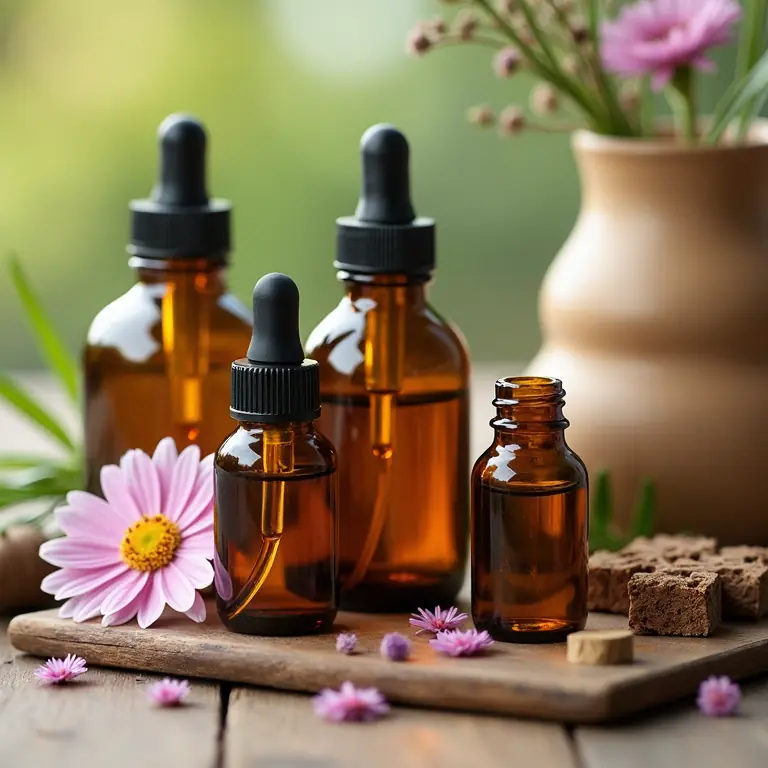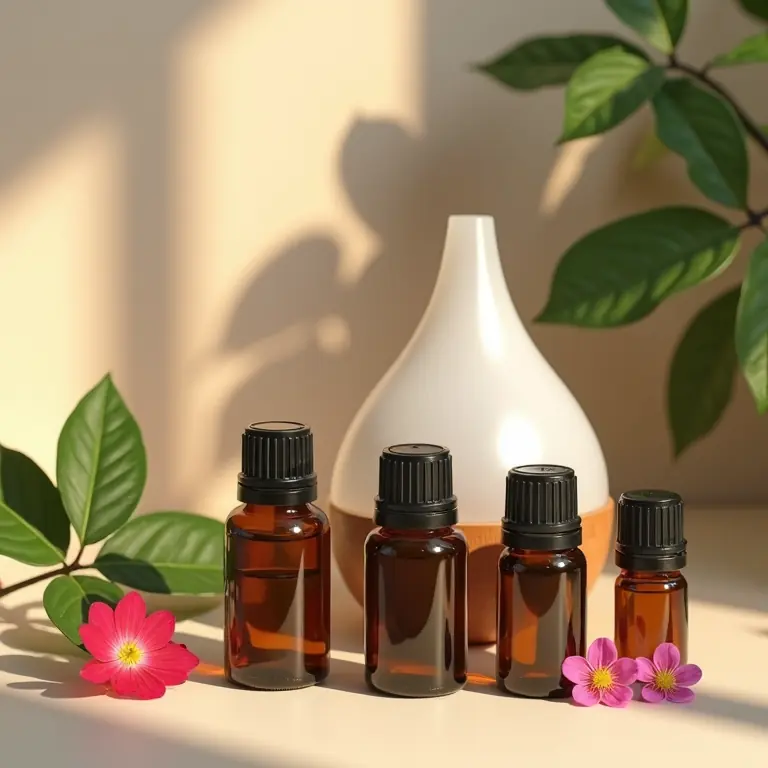Assemble Your Aromas: A Friendly Guide to Blending Essential Oils
Essential oils have been used for centuries for their therapeutic properties and delightful scents. But beyond simply enjoying a single oil, lies a world of possibilities when you start blending them. Blending essential oils isn’t just about creating pleasant fragrances; it’s a way to synergistically enhance their benefits, crafting personalized aromas tailored to your specific needs and preferences. This guide will walk you through everything you need to know to confidently begin your essential oil blending journey, from understanding scent families to safety considerations and practical blending recipes.
Why Blend Essential Oils?
Think of blending essential oils like a musician composing a symphony. Each instrument (oil) has its unique sound (aroma and properties), but when combined thoughtfully, they create something far more complex and harmonious. Here’s why blending is beneficial:
- Synergy: Certain oils work together to amplify each other’s effects. For example, lavender and chamomile both promote relaxation, but blended together, their calming properties are significantly increased.
- Complexity & Nuance: A single oil can be lovely, but a blend offers a richer, more layered aroma that evolves over time. This complexity can be more appealing and satisfying.
- Targeted Benefits: Blending allows you to address multiple concerns simultaneously. Need a blend for both stress relief and better sleep? Blending is the answer!
- Personalization: The most exciting part! You can create blends that perfectly match your individual tastes and needs, something pre-made blends often can’t offer.
Understanding Scent Families
Essential oils are categorized into scent families, which helps predict how they’ll interact in a blend. Think of these families as color palettes for your aromatic creations. Here’s a breakdown of the main families:
- Floral: Sweet, delicate, and often romantic. (Lavender, Rose, Jasmine, Ylang Ylang)
- Citrus: Bright, uplifting, and energizing. (Lemon, Orange, Grapefruit, Bergamot)
- Woody: Grounding, calming, and earthy. (Cedarwood, Sandalwood, Pine, Cypress)
- Herbaceous: Fresh, invigorating, and often medicinal. (Rosemary, Peppermint, Basil, Thyme)
- Earthy: Rooted, grounding, and often used for balancing. (Vetiver, Patchouli)
- Spicy: Warming, stimulating, and often exotic. (Cinnamon, Clove, Ginger)
- Resinous: Rich, balsamic, and grounding, often used for emotional support. (Frankincense, Myrrh)
Generally, oils within the same family blend well together. However, don’t be afraid to experiment with combining different families – that’s where the magic happens!
The Notes of Essential Oils
Just like perfumes, essential oils have “notes” that determine how they’re perceived throughout the blend’s lifecycle. Understanding these notes is crucial for creating balanced aromas.
- Top Notes (10-20% of blend): These are the first scents you smell – light, fresh, and volatile. They evaporate quickly but create the initial impression. (Citrus oils, Peppermint, Eucalyptus)
- Middle Notes (50-70% of blend): These form the heart of the blend, offering balance and body. They emerge after the top notes fade and last longer. (Floral oils, most herbaceous oils)
- Base Notes (10-20% of blend): These are the grounding, long-lasting scents that provide depth and fixative properties, helping the blend linger. (Woody oils, Resinous oils, Vetiver, Patchouli)
A well-balanced blend will have a combination of all three notes, creating a harmonious and evolving aroma. Think of it as building a pyramid – the base notes provide the foundation, the middle notes the body, and the top notes the finishing touch.

Safety First: Essential Oil Blending Considerations
While blending essential oils is incredibly rewarding, safety is paramount. Here are essential guidelines to follow:
- Dilution is Key: Never apply undiluted essential oils to the skin. Always dilute them in a carrier oil (like jojoba, sweet almond, grapeseed, or coconut oil). A general guideline is 1-3% dilution for adults (approximately 6-18 drops of essential oil per ounce of carrier oil).
- Photosensitivity: Some citrus oils (Bergamot, Lemon, Lime) can cause photosensitivity, making skin more susceptible to sunburn. Avoid applying these oils to areas exposed to sunlight.
- Pregnancy & Medical Conditions: If you are pregnant, breastfeeding, or have any medical conditions, consult with a qualified aromatherapist or healthcare professional before using essential oils. Certain oils are contraindicated in these situations.
- Allergies & Sensitivities: Always perform a patch test before using a new blend. Apply a small amount of the diluted blend to a small area of skin and wait 24 hours to check for any reaction.
- Quality Matters: Choose high-quality, 100% pure essential oils from reputable sources. Avoid oils with added synthetic fragrances or fillers.
- Storage: Store essential oils in dark glass bottles in a cool, dark place away from direct sunlight and heat.
Essential Blending Tools
You don’t need a lot of fancy equipment to get started, but these tools will make the process easier:
- Dark Glass Bottles: For storing your blends. Amber or cobalt blue glass protects the oils from light degradation.
- Droppers: For precise measurement.
- Small Glass Beakers or Bowls: For blending.
- Labels: To clearly identify your blends.
- Carrier Oils: Jojoba, sweet almond, grapeseed, coconut oil, etc.
- Notebook & Pen: To record your recipes and observations! This is *crucial* for recreating blends you love.
Blending Techniques: A Step-by-Step Guide
Here’s a simple approach to blending:
- Define Your Intention: What do you want the blend to achieve? Relaxation, energy, focus, sleep support? This will guide your oil choices.
- Choose Your Base Note: Start with a grounding base note (10-20%).
- Add Your Middle Note: Build the heart of the blend with a middle note (50-70%).
- Finish with Your Top Note: Add a bright top note (10-20%).
- Blend & Smell: Carefully combine the oils in a glass beaker or bowl. Swirl gently to mix. Smell the blend and adjust as needed. Add one drop at a time until you achieve the desired aroma.
- Record Your Recipe: Write down the exact number of drops of each oil used. This is vital for replicating successful blends.
- Dilute & Store: Dilute the blend in a carrier oil and store it in a dark glass bottle.
Beginner-Friendly Blend Recipes
Here are a few recipes to get you started. Remember to adjust the drop amounts to suit your preferences and dilute properly.
Relaxation Blend
This blend is perfect for calming the mind and easing tension.

- Lavender: 10 drops (Middle Note)
- Chamomile: 8 drops (Middle Note)
- Sweet Orange: 5 drops (Top Note)
- Cedarwood: 3 drops (Base Note)
Energy Boost Blend
Need a pick-me-up? This blend will invigorate your senses.
- Peppermint: 7 drops (Top Note)
- Rosemary: 6 drops (Middle Note)
- Lemon: 5 drops (Top Note)
- Ginger: 2 drops (Spicy Note/Base)
Sleep Support Blend
Promote restful sleep with this soothing blend.
- Lavender: 12 drops (Middle Note)
- Vetiver: 4 drops (Base Note)
- Marjoram: 4 drops (Middle Note)
Advanced Blending Techniques
Once you’re comfortable with the basics, you can explore more advanced techniques:
- Chord Blending: Creating blends with multiple oils from the same scent family to create a more complex aroma.
- Triadic Blending: Using three oils that are evenly spaced on the scent wheel (e.g., Lavender, Lemon, and Vetiver).
- Using Modifiers: Adding small amounts of specific oils to round out a blend or correct imbalances. For example, a touch of frankincense can add depth and sophistication to a floral blend.
Resources for Further Learning
There’s a wealth of information available online and in books about essential oil blending. Here are a few resources to get you started:
- Books: The Complete Book of Essential Oils and Aromatherapy by Valerie Ann Worwood, Essential Oil Blending Recipes by Stephanie Tourles
- Websites: Many reputable essential oil companies offer blending guides and resources on their websites.
- Online Courses: Several online platforms offer comprehensive courses on aromatherapy and essential oil blending.
Don’t be afraid to experiment and trust your nose! Blending essential oils is a creative process, and the most important thing is to create aromas that you enjoy and that support your well-being.
Want to explore other fascinating hobbies? Check out our guides on oral history interviewing, vermicomposting, and geocaching adventures!


Discussion about this post